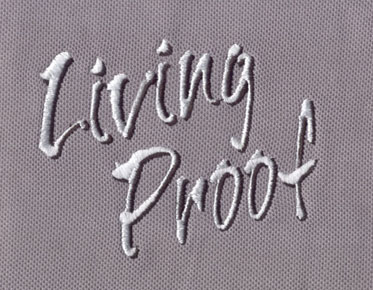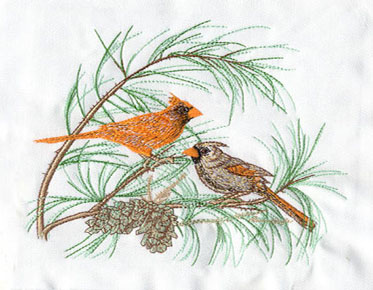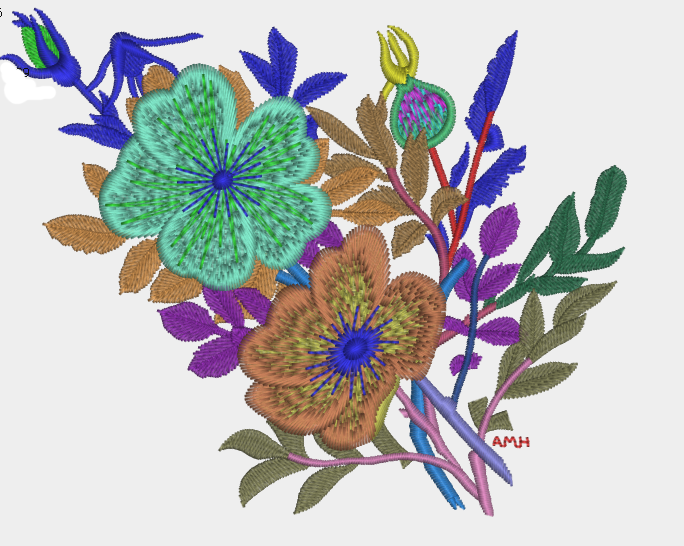2022 Guide To Embroidery Digitization
Are you just stepping into the world of embroidery digitization?
Well, then you must have heard a lot of new terms like embroiderydigitization!
You're usually curious about how it works. It doesn't take long for you to get into the conversation and start wishing you too could sew the artwork you want instead of wearing the standard designs that are usually sold.
After dedicated research, we came up with a way to turn images into carefully curated embroidery designs.
What is embroidery digitization?
The process of converting an image into an embroidery file (readable by a machine) is called embroidery digitization. This is used to print onto clothes using art created by people. This replicates the original art created by any artist into the actual look design on the garment.
For the sake of simplicity, digitization is the method involved in documenting a work of art. Use a product that allows the patch embroidery machine to make a path for the needle. Interaction is not computerized. In fact, extraordinary digitization is considered an artistic expression as long as it is done accurately.
Most embroidery machines have their own programming. It allows us to control its capacity, at the same time with the help of digitized documents.
Trends and evolutions in embroidery digitization:
Since times are changing rapidly, we find that the fashion industry is developing at the same rate. However, one of the fastest growing trends is the apparel industry. The way people dress, originally, women only liked florals or solids. Now we find women wearing all kinds of trendy designs. People believe that clothes communicate in a completely different way, which is why digital is the best way to meet every need.
The digitization of embroidery can help people put their favorite designs on clothes as embroidery instead of printed images. This makes the complete look of the garment beautiful. The use of stickers and printed designs makes the designs look worn and bad. Digitization can help you wear the most stunning designs with the ultimate class!
There has been a wave of trending embroidery designs with the help of machine embroidery designs. You also have to follow trends and create your own fashion statement! There are countless innovations in textile development, of which digitization is one of the biggest alternatives to printed artwork. You can now depict your work in a more subtle way, with a clear presentation! The digitization of embroidery has given clues to many other ideas, such as accessory embroidery, pastel color palettes, photorealism and minimalism.
This digitization of embroidery also affects traditional embroidery methods. The new method has valuable implications for fabric-like substrates. They also use advanced technology to match colors and produce patterns that are vibrant and long-lasting. Also, stitching is done by machine.
This way you can ensure that all the pins are similar and in the same proportions. Traditional methods generate a lot of waste. Sometimes the design fails to keep the fabric in place. All these uncertainties are eliminated with the help of digitization due to incorrect stitch proportions!
How fast is it entering the fashion industry?
The fashion world finds itself changing fast! This shows that they are now able to communicate with customers in a better way. Embroidery digitization has made the fashion industry more efficient and productive. They can produce valuable results in a short period of time.
Fashion Clothing Trends:
Fashion apparel will use embroidery digital technology to a greater extent. Over the past decade, we have seen the digitalization of embroidery into fashion apparel and is expected to explode in 2022.
Promotion and Branding:
The fashion industry can easily market and promote their products. This allows the company to maintain its status as a "brand". They can create logos and make them into clothes in a better way. Digitization has been around for a long time, but now it is being embraced by the industry on a major level.
Competitive Advantage:
The ability to digitize embroidery on anything from clothing to accessories is critical for small businesses. Companies want to gain a competitive advantage when selling items online. These businesses are increasingly adopting embroidery digital services because they are cheaper and allow them to expand the reach of their brands through creative marketing efforts.
The steps to be included in the digitization of machine embroidery:
Step 1: Prepare Your Artwork for Embroidery:
When digitizing embroidery designs, it's important to know if a particular design requires a particular type of stitch. The digitizer's role also includes ensuring the analysis design. This helps them understand if the design needs any changes before it can be scanned for digitization. Another important step is to consider the size of the image.
It is important to understand that various logos are not suitable for digital size. The digitizer needs to modify the design according to the requirements so that the embroidery quality is good.
Step 2: Set the Design Size for Embroidery
A fundamental aspect of this approach is understanding design. Machine embroidery digitization will be affected by the size, complexity and location of the artwork. What fabrics to choose, what threads are all good when put together? All decisions made in this way should be the expertise of an efficient digitizer. In some cases, they let the fabric show through because the color would look better instead of laying the thread.
Remember to assign embroidery stitch types to certain areas, especially when considering factors like fabric type and the pull and push of the garment. Since there are many factors and directions that can affect the outcome of the stitching, each project should be approached in a unique and careful manner.
Step 3: Select the stitching type
When looking to achieve a trend through the use of textures and different looks, you can find a wide variety of pin types. Using a variety of splice types means you need to know the length you need. It's also important to keep in mind that your approach to clothing depends heavily on the choice of stitch type. We propose the ideal suture design for you:
Push-pull stitching:
Pulling and pushing is another key feature of needlework. While sewing, the design may move. Some stitches will slip off as a result. Heavy fabrics, long stitches, lots of thread and tight thread axes can cause this movement. The digitizer must account for pull and push effects.
Satin stitching:
Suppose you plan to stitch text or a statement on your clothing. Then you must choose a satin and clear design! This gives you a sharp and shiny look with the help of long strands of satin.
Straight seam:
A straight stitch is a basic embroidery stitch that involves repeated horizontal stitches to create a pattern. Thick thread can be made by repeating the straight stitch several times. Straight seams aren't just straight lines; it's worth noting.
Fill type stitching:
Filler stitches are called ceded or tatami-style stitches. As its title suggests, ceding needles are used to digitize embroidery designs. Fill the stitches and use spare thread if you need a knitting effect for your needle thread.
Step 4: Set the stitching direction
Once you understand the importance of stitching styles, it's time to orient them. This will help you determine the direction in which the stitching pattern will fall on the garment. This establishes a secret seam for precise embroidery digitizing machines.
You can also provide a splice angle when describing the splice fill area. If you stitch all the pieces in your design at the same angle, your design will appear flat and your embroidery will pull your fabric that way. We always make sure that the stitch angles of the pieces in my embroidery designs are varied.
Step 5: Set the Thread Color for Embroidery
Once you've covered all the major aspects of digitizing embroidery, you need to choose the color combination that best suits your design, especially if you're designing a logo! The color of the logo should coordinate with the pattern of the design.
Select the correct embroidery thread color from the color bar available on the web. Make sure the embroidery thread design and tone match the Pantone colors of your company logo. However, if you're not sure about the color pattern that should match the fabric design or digital structure, recommend it to your corporate friends.
Step 6: Transfer Digital File to Professional Embroidery Machine
When talking about embroidery digitizing, it's best to downsize your image to a standard size that fits your design. Once you're done digitizing, you can also choose to resize your design to one of the best options. The file is now ready to be sent to the embroidery machine via a device compatible with the embroidery digitizing software.
Is embroidery difficult to digitize?
Digital embroidery design is a complex process that requires professional training. well! It's not something you can do with your standard graphics editing software or design skills. There are several other important considerations to keep in mind when preparing an embroidery design.
You have to take some time out of the digitization process to be successful. However, this time period is critical for implementation to achieve better results. The process of digitizing unique designs can seem difficult. But for a trained person, they are easy to do. It doesn't matter what material; it can be jersey, satin or any other material. Digitization can cater to a variety of materials.
How long does it take to learn to embroider digitally?
This is one of the widely asked questions. Roughly speaking, it takes about a few shifts to actually learn to digitize. But this requires a certain commitment. Taking 5 minutes or learning such a progressive task throughout your day will not get you anywhere. You have to be dedicated to this task and study with all your heart. Make it as important as any other task in your life.
Better call it your new hobby. Because it takes a little enthusiasm to dedicate yourself properly, the feedback and results will influence your overall interest in the learning method.
Always remember that machine embroidery digitization is still relatively young compared to hand stitching. It started in the nineteenth century. Still, embroidery digitization did not start with computers, contrary to popular assumptions.
Machine embroidery was once done on Schiffli looms, which were 10-15 yards long and were capable of producing hundreds of pieces at a time. Schiffli master digitizers run these machines, personally directing and tracking every stitch in real time.
Is it necessary to use software to digitize embroidery?
Even if this may seem odd, your machine will produce the best results. You need to make them work in harmony. This means that your machine and software should support each other. Adding wireless devices can be a beneficial factor.
But to be fair, it doesn't make much sense to add software to the digitization process. Not only that, if you are committed to creating designs and digitizing. If you try to specify machine-related software, you may end up paying more than usual
You may find it difficult to obtain the software initially. But this is normal because people only need 5-10 minutes to get familiar with normal software. Compare it to technical software and you might take longer than usual, but it's not rocket science. You don't have to worry about anything!
Education is essential, and our tutorials are very helpful in learning how to digitize, but you may have specific questions about how certain things are done or where to find tools. While Google is a great resource, sometimes it's more convenient to just post your query online so that real people can reply and help you.
What's the use of knowledge if you've never
had the opportunity to put it into practice? Could it be very expensive to
start with commercial software for newbies? That's why we recommend our
beginners to practice their logos with free software. While there is a lot of
new software available, you can use older tools to gain a digital experience.
Premier +2
Embrilliance Express.
Sophie Sew
2 Stitch organizer
By Editor
We believe that every embroiderer should be aware of this technology and its disruption to the fashion industry. Even if they're not performing themselves, it helps them go beyond their creativity
Embroidery digitization is said to be one of the key aspects of embroidery in modern trends. It can make and break the quality of your designs. All you need is to put the required time into it. This is the basis for your business to stand out in the fashion world. Also, not adapting to changing times can potentially cost you time and money.
Since small mistakes in details or incorrect patterns can ruin your reputation in the field of digital embroidery, it is critical to employ the best digitizing methods and have a professional digitizer oversee the process.
So the biggest advice for digitizers is to
invest in the process so they can pay close attention to every detail and
pattern without compromising the quality of the fabric and deliver the best
digital artwork to the market!



